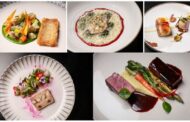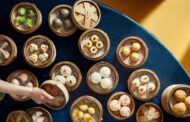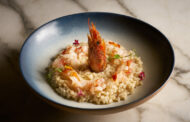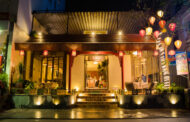Whoever has tried bánh tẻ or bánh răng bừa (rice cake filled with brown onion) will never forget its delicious taste.
Bánh tẻ or bánh răng bừa is a specialty of Phung Cong Commune in the northern province of Hung Yen. Its taste is derived from the sweetness of meat and crispiness of cat’s ear mixed with the soft and flavourful rice powder.
Phung Cong rice cake is so well known in northern Vietnam that it is not only sold in every small lane and alley of Hanoi but is also sold abundantly in many rural markets in nearby Hung Yen, Hai Duong, Bac Ninh and Hai Phong provinces.
With simple ingredients, the cake can be found in many places in Vietnam, but gourmets argue that those made in Phung Cong Commune are the best, both in shape and taste.
Despite being busy with farming, many households in the commune still spare time to make the rice cake in huge quantities, from hundreds to thousands of pieces, to sell to traders.
“During leisure after harvesting, the households increase the number of bánh tẻ they make, which are not only sold to traders but also in rural markets or village fairs within the provinces,” said Nguyen Thi Hai, whose family has made bánh tẻ for three generations.
“The cake is cheap, so it is sold like hot cakes. Many people buy it to gift to the elderly or children. Sometimes I take 500 pieces to the village fair and they are all sold in the middle of the day,” she added.
According to experienced local rice-cake makers, the ingredients must be delicious to make the cake delicious, which is why the process of choosing the rice, meat and spices is crucial.
The best rice to make bánh tẻ is the aromatic tám xoan or tám thơm variety grown in Nam Dinh Province that has been recently harvested. The rice that has been harvested for too long is substandard as it will have an unpleasant smell.
“All households in the commune, including mine, making the rice cake must keep their customers’ trust by never buying cheap, low-quality rice,” Hai said.
Likewise, the ingredients for the stuffing – mixed lean and fat meat, cat’s ear, pepper and onion – must be of the best quality.
The process of making bánh tẻ is quite simple; it is the grinding of rice powder that is complex. The rice, after being soaked in pure limewater for three to four hours, needs to be cleaned thoroughly with fresh water.
It is compulsory to grind the rice in a stone mortar instead of using ready-to-use rice powder as it will make the cake hard and not as soft as that made with rice powder ground with water.
After the grinding phase, the mixture is poured into a huge pot and heated with light fire to become condensed. The cook must use a large flat chopstick to stir the liquid constantly to prevent the powder at the bottom of the pot from overcooking. After the powder is half-cooked and has condensed, it is placed on a tray to cool off.
The stuffing is made with minced and boiled lean and fat meat mixed with sliced cat’s ear and slightly grilled onion. All the ingredients are minced to small pieces. Before frying, pepper and high-quality fish sauce are added. The amount of sauce added to the mixture is also important as it will decide the taste of the cake.
According to Hai, the wrapping phase demands meticulousness and patience, and an experienced cake maker can wrap hundreds of cakes in a day. Phrynium leaf, some 40cm long and 15cm wide, is used to wrap the cake. After wrapping, a handful of rice powder is spread along the leaf. The stuffing is placed right in the middle and the cake is shaped like harrow teeth, or răng bừa in Vietnamese, after which the cake is named. The cake is then tied around with nylon or bamboo strings.
The final step is boiling or steaming the cake. Boiling is faster, taking some 10 minutes, but steaming helps to preserve the original taste of the cake.
“Though steaming is more time-consuming, nearly all the villagers opt for this method because it preserves the flavour, glutinosity and strong taste of bánh tẻ made in our village,” Hai said.
Peel off the steaming hot tẻ cake and enjoy it instantly with chilli sauce. The easy-to-make and reasonably priced rural specialty reflects the rural taste of Phung Cong Commune, attracting visitors to try the delicacy.






















